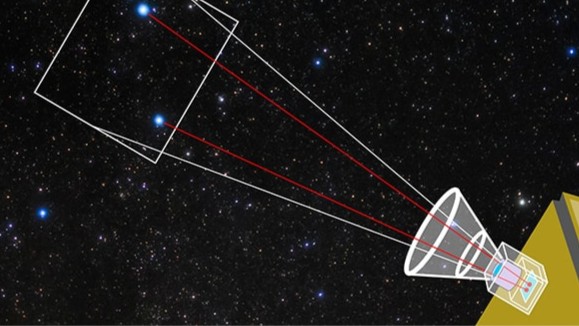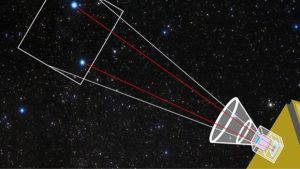
Star trackers’ field of view (FOV) covers the sky angle in one image. Engineers measure it in degrees (°). The shape is usually square or rectangular, such as 14°×14° or 20°–60°. Optics’ focal length and sensor size determine the FOV. This mirrors camera lenses’ angle range.

FOV’s Importance in Attitude Determination
FOV plays a core role in attitude determination. Wider FOVs let devices observe more stars at once. Thus, they shorten star catalog matching time.
Statistically, larger FOVs raise the chance of detecting at least four stars. Four stars form the minimum for accurate triangulation.
FOV also boosts robustness against interference, like sunlight or moonlight stray light. Wide FOVs may need complex baffles or filters to suppress noise. However, they excel by capturing backup constellations when bodies block some stars.
Factors Influencing FOV Design
Mission Needs: Earth-observation satellites prefer narrow FOVs for ultra-high pointing accuracy. Deep-space probes gain from wide FOVs to handle sparse star fields and long-range navigation.
Optics and Detectors: High-pixel-density CMOS or CCD sensors support wider FOVs without losing resolution. Radiation-hard designs ensure long-term reliability in space’s ionizing radiation.
Power and Mass: Wide-FOV trackers process larger images, so they demand more computing power. Yet, miniaturization now yields compact 20°–60° products for CubeSats.
Environmental Adaptability: Thermal shifts and vibrations affect FOV stability. Engineers use Invar-like thermally stable materials. They also integrate autonomous algorithms to adapt to dynamic changes.
Recently, wide-FOV star tracker technology has achieved major breakthroughs. Prototype wide-FOV cameras reach 60°. They greatly speed up attitude acquisition, especially in complex starry skies.
Send us a message,we will answer your email shortly!